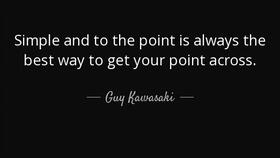Introduction:
Fishing with a bobber, also known as bait fishing, is a timeless and popular method for catching a variety of fish species. Whether you're a seasoned angler or a beginner looking to master the basics, understanding how to properly use a fish bobber can significantly enhance your chances of success. In this article, we'll delve into the key techniques and tips to help you improve your fish bobber fishing skills.
Choosing the Right Bobber:
The first step in mastering fish bobber fishing is selecting the appropriate bobber for your fishing environment and target species. Here are some factors to consider:
- Size: Larger bobbers are more visible in murky water, while smaller ones are ideal for clear water conditions.
- Buoyancy: Ensure the bobber floats adequately to keep your bait at the desired depth.
- Shape: Different shapes can help you detect bites more effectively. For example, a round bobber may be better for detecting subtle movements, while a cone-shaped bobber can indicate when the bait is moving away from the fish.
Properly Attaching the Bobber:
Once you've chosen the right bobber, it's crucial to attach it correctly to your line. Follow these steps:
- Cut the Line: Begin by cutting a length of monofilament line that is suitable for your fishing spot and target fish.
- Loop Knot: Tie a loop knot at the end of the line to attach the bobber. This allows for easy adjustments and removal of the bobber when necessary.
- Bobber Hook: Attach the bobber to the loop knot using a snap swivel or a similar connector for a secure fit.
Setting the Depth:
Determining the right depth for your bait is crucial for attracting fish. Here's how to set the depth:

- Experiment: Start by casting your line out and observing where the bobber settles in the water column. Adjust the amount of weight or split shot on your line to achieve the desired depth.
- Current Considerations: If you're fishing in a river or stream, consider the current's strength and direction when setting the depth.
Presenting the Bait:
The way you present your bait can make a significant difference in your fishing success. Here are some tips:
- Natural Movement: Allow your bait to drift naturally in the water. Avoid rapid or unnatural movements, as this can spook fish.
- Patience: Be patient and let your bait sit for a few moments before reeling it in. Fish often take a few seconds to bite.
- Adjustments: If you're not getting bites, try changing the speed of your retrieve or the depth of your bait.
Sensing Bites:
Being able to detect a bite is essential for successful fish bobber fishing. Here's how to improve your bite detection:
- Feel: Pay attention to the tension on your line. A sudden pull or a change in tension can indicate a bite.
- Look: Watch the bobber closely for any movement or changes in position that might suggest a fish has taken the bait.
- Practice: The more you fish, the better you'll become at interpreting these subtle cues.
Handling the Catch:
Once you've detected a bite and successfully landed a fish, here's how to handle it:
- Secure the Hook: Before reeling in, ensure the hook is securely attached to the fish's mouth.
- Reel In Slowly: Move the fish to the shore or boat gradually, avoiding sudden movements that can injure the fish.
- Release or Keep: Decide whether to release the fish or keep it for your catch. If you're releasing, handle the fish gently to minimize stress.
Conclusion:
Improving your fish bobber fishing skills involves a combination of selecting the right equipment, understanding water conditions, and mastering the art of bait presentation and bite detection. By following these tips and practicing regularly, you'll be well on your way to becoming a more proficient fish bobber angler. Happy fishing!












